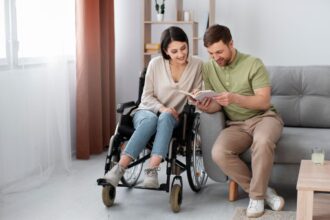Are you or a loved one facing mobility challenges? Don’t let it hinder your move! Explore assistance options and accessibility solutions here.
Understanding Limited Mobility
Limited mobility affects millions of people worldwide. It can result from various factors, including age, injury, illness, or disability. Consequently, daily tasks become daunting, especially when moving to a new residence.
Challenges Faced During a Move
Individuals with limited mobility encounter numerous obstacles during relocation. These include:
- Difficulty navigating stairs and uneven terrain
- Inability to lift heavy objects or furniture
- Insufficient strength for prolonged physical activity
- Dependence on caregivers or assistants
Assistance Options for Moving
Fortunately, various assistance options are available to facilitate a smooth move:
- Professional Movers: Hire experienced movers who specialize in assisting individuals with limited mobility.
- Senior Move Managers: These professionals coordinate and execute moves, providing emotional support and guidance.
- Home Care Providers: Trained caregivers offer pre- and post-move assistance with daily tasks and errands.
Accessibility Solutions for a Smooth Transition
In addition to assistance options, various accessibility solutions can enhance the moving experience:
- Accessible Moving Equipment: Utilize specialized equipment, such as stair climbers or lift systems, to navigate challenging spaces.
- Modular Furniture: Invest in modular furniture that is easy to assemble and disassemble, reducing heavy lifting.
- Smart Home Technology: Leverage smart home devices to control lighting, temperature, and security, promoting independence.
Preparing for the Move
To ensure a successful relocation, take the following steps:
- Assess Your Needs: Identify specific challenges and requirements to tailor assistance options and accessibility solutions.
- Create a Moving Plan: Establish a comprehensive plan, including timelines, budgets, and task assignments.
- Pack Strategically: Pack essential items separately, labeling them for easy identification.
Packing and Labeling Essentials
When packing, prioritize essentials like:
- Medications and medical equipment
- Comfort items (e.g., pillows, blankets)
- Important documents (e.g., identification, insurance)
Label each box with its contents and the room it belongs in, ensuring a seamless unpacking process.
Accessibility Features in New Residences
When selecting a new home, consider the following accessibility features:
- Wide Doorways and Hallways: Ensure easy navigation for wheelchairs or walkers.
- Roll-in Showers: Opt for showers with minimal threshold requirements.
- Single-Level Living: Choose residences with single-level living to minimize stair usage.
Moving with limited mobility requires careful planning, specialized assistance, and innovative accessibility solutions. By understanding the challenges, exploring available options, and preparing diligently, you can navigate your relocation with confidence and independence.
